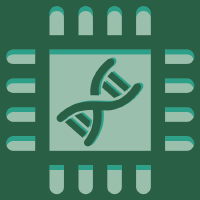Topic Menu
► Topic MenuTopic Editors

Advanced Nanomaterials for Sensing Applications
Topic Information
Dear Colleagues,
Advanced nanomaterials (e.g., metal–organic frameworks, noble metal nanoparticles, semiconductor quantum dots) exhibit numerous unique properties such as size-dependent opto-electronic features, a high surface area to volume ratio, robust and stable structures, pendent functional groups, discrete signal output, and excellent sensitivity. These properties enable the aforementioned nanomaterials to be used in the design and development of sensors for the detection of numerous targets, such as heavy metals, organic pollutants, pathogenic microbes, biomarkers, metabolites, etc. Further, these targets can be detected using various sensing methodologies such as electrochemical detection, optical, fluorescence, surface plasmon resonance, colorimetry, etc. In view of the diverse properties and sensing applications of the new nanostructured materials, we cordially invite you to contribute to this Topic entitled, “Advanced Nanomaterials for Sensing Applications”. The major goal of this topic is to collect very recent findings (original research, communications, or review articles) and developments in the synthesis and sensing applications of advanced nanomaterials (e.g., metal–organic frameworks, noble metal nanoparticles, transition metals and metal oxides, semiconductor inorganic nanocrystals, carbon-based nanomaterials). Prospective authors may consider the various sensing applications of the above-mentioned nanomaterial categories for the detection of this catalysis, the sensing of diverse targets (e.g., environmental pollutants, microbes, pathogens, explosives, biomarkers, metabolites).
Prof. Dr. Ki-Hyun Kim
Dr. Deepak Kukkar
Topic Editors
Keywords
- nanomaterials
- advanced materials
- sensing
- biosensing
- chemosensing
- optical sensing
- electrochemical sensing
Participating Journals
| Journal Name | Impact Factor | CiteScore | Launched Year | First Decision (median) | APC |
|---|---|---|---|---|---|

Applied Sciences
|
2.5 | 5.3 | 2011 | 17.8 Days | CHF 2400 |

Biosensors
|
4.9 | 6.6 | 2011 | 17.1 Days | CHF 2700 |

Materials
|
3.1 | 5.8 | 2008 | 15.5 Days | CHF 2600 |

Nanomaterials
|
4.4 | 8.5 | 2010 | 13.8 Days | CHF 2900 |

Sensors
|
3.4 | 7.3 | 2001 | 16.8 Days | CHF 2600 |

MDPI Topics is cooperating with Preprints.org and has built a direct connection between MDPI journals and Preprints.org. Authors are encouraged to enjoy the benefits by posting a preprint at Preprints.org prior to publication:
- Immediately share your ideas ahead of publication and establish your research priority;
- Protect your idea from being stolen with this time-stamped preprint article;
- Enhance the exposure and impact of your research;
- Receive feedback from your peers in advance;
- Have it indexed in Web of Science (Preprint Citation Index), Google Scholar, Crossref, SHARE, PrePubMed, Scilit and Europe PMC.


